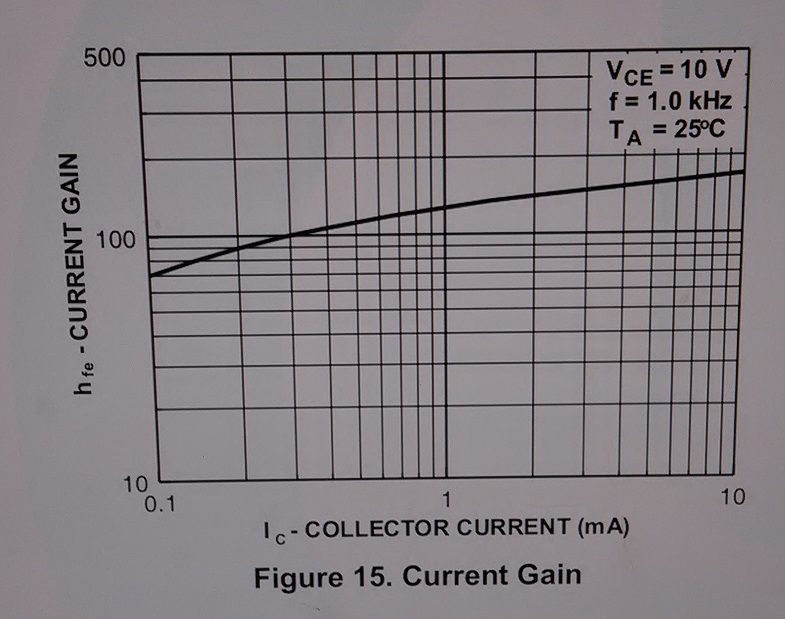This is the circuit in question.
What is the input Z? As the circuit is given we have a 100k base resistor, Vcc of 1.2 volts. The simple answer is assume Vbe=0.6 volt and Vb=Vcc-Vbe=0.6 volt. The base current is Ic/ß or Ic=Ib * ß. This implies Rbe=Rb/ß assuming ß=100 Rbe=100k/100=1k. BUT can we assume ß=100? A quick look at the spec sheet will tell us the ß has a range of 100 to 400? We'll get back to that. In the old days we had manuals full of data. We could run the test our self or let the factory have some one do it for us. How would you determine the resistance value for an unknown resistor. Measure the voltage drop across it and the current flow through it and apply Ohm's law. That's what we will do here first , then we'll look at the spec's.
Using this simple circuit, three meters and a variable power supply will get the job done.
I labeled the meters so you can see what they tell us.
The simple circuit disappears under all the test leads but it is as drawn except I used a fixed 100k resistor. I will just display the results. I set the supply for 1.0,1.2,1.5 and 2.0 volts. I did one series without an AC input to get the DC parameters and then did another with the AC.
Here is the compiled data.
Hfe, gain, ß = 100 when the collector current is 0.3ma at their test conditions. They used 10 volts where I used 1.2 volts. You could just measure Ic for your circuit and use the chart. What else will the datasheet tell us?














No comments:
Post a Comment